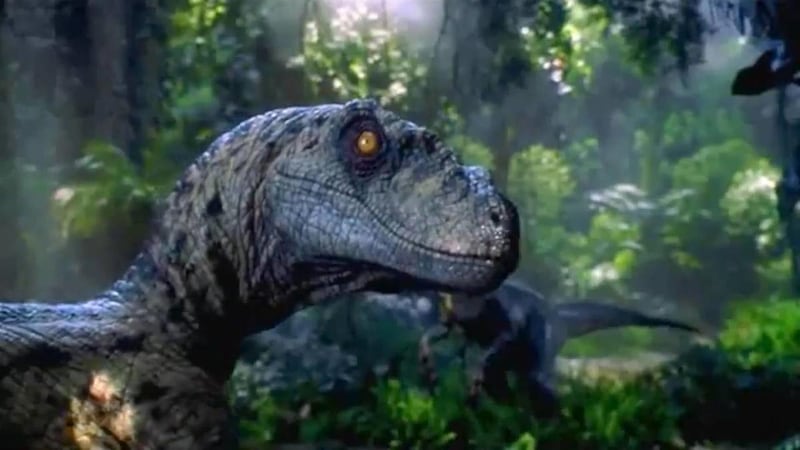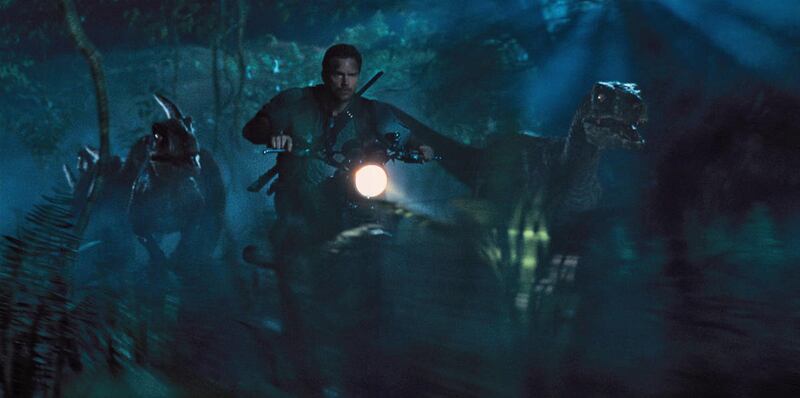When “Jurassic Park” premiered 22 years ago — almost exactly to the day — it transformed visual effects in movies.
When “Jurassic World” is released this weekend, audiences will have the opportunity to see just how far computer-generated imagery has come.
"Jurassic Park" joined practical effects with computer graphics to depict dinosaurs returned from extinction. CGI was relatively new then, and filmmakers used it along with many other tools to shock audiences by how real the dinosaurs looked.
Brent Adams, director of Brigham Young University’s Center for Animation, said what made “Jurassic Park” different from other movies of its time, at least with respect to visual effects, was how the CGI dinosaurs interacted with their environments and with other characters.
“‘Jurassic Park’ came out, and those dinosaurs looked like they were intermingling with people,” Adams said. “(It) really was a stunning piece of work. Most people couldn’t tell how in the world they did dinosaurs.”
Those “Jurassic Park” dinosaurs, sometimes animatronic and sometimes computer-generated, caught audiences off guard and made moviemakers take note. According to Tim Rowberry and Ian Johnston, co-founders of TML (animation) Studios in Salt Lake City, director Steven Spielberg found a balance between practical and computer-generated visual effects.
“They actually built out items, so it feels real in scene and moves real in scene,” Rowberry said. “And then they do (animated) visual effects on top of that.”
Adams described the process for creating computer-generated effects, which he said can cost upward of $1 million for each running minute of images. First, he said, storyboard artists sketch out the computer-animated scenes visually. Storyboards are sent to designers, who decide what characters will look like.
Once the characters are designed, they are built as 3-D computer models, which then receive even more visual treatment as artists add textures to each model, whether that’s skin, scales or fur.
“Everything then has to have a surface created for it, what it’s supposed to be,” Adams said.
Next, detailed 3-D models go through the animation process. Animators guide characters through specific movements, scenes receive lighting and other finishing touches and, finally, computers render the animations into continuous frames.
Adams said the difference between feature animation and animation in live action films is that — obviously — live action animation has to match its real, physical environment. It can’t look like a cartoon.
“The lighting has to match the live-action plate, or it will look like it was a bad Photoshop cut-and-paste job,” he said. “The perspective has to match, the lighting has to match, the colors have to match.”
When “Jurassic Park” was released, Johnston said, computer graphics were still relatively new. The movie was such a hit because audiences could lose themselves in the story.
“For me, it was a pivotal wrapping up, showing that you can have a film that has practical effects and computer-generated effects that work so well together that it creates a seamless experience,” Johnston said.
Two decades later, Adams said, the technology has advanced enough that it's not as difficult to make things look realistic.
"In a way, parts of it are easier to do now, but then we just keep pushing the envelope," he said. "Now instead of having one or two dinosaurs we put in the movie, I bet 'Jurassic World' has dozens of them."
He's right.
"Jurassic World" is filled with shots of almost every kind of dinosaur imaginable. The creatures are on camera more, and they are certainly more detailed than in "Jurassic Park."
However, Johnston said that these days, the CGI shock factor is diminished because audiences see impossible things on the big screen all the time — and expect them to be well made.
“Unfortunately, as an audience we’re getting more savvy to it,” he said. “Even the people that don’t even touch visual effects can call a blunder on a trick.”
Adams said sometimes the power of graphics takes over while storytelling gets pushed to the side in today's high-budget, action-packed, over-the-top films.
“The problem to a lot of people is now movies are completely overrun with computer graphics, and there’s no story anymore,” he said.
Rowberry agreed.
“There are movies that are, more than anything, eye candy and that’s it. They’ve come out just to show that they can make these big grandiose things, and really the story’s a one-liner. (Technology) should enhance the story. It shouldn’t be the story.”
Both he and Johnston said movies can be as compelling as possible by striking the same balance “Jurassic Park” did with its effects and using both digital and practical elements. Johnston said the Tyrannosaurus Rex in the first movie worked because of this combination.
“Practical effects are the new standard again,” said Johnston. “When you have an actual prop in front of real lights, in front of volumetric fog and smoke, it’s as real as anything that you’re ever going to see. … The audience doesn’t think, ‘Is this real?’ They think, ‘T-Rex foot!’”
Fortunately for viewers who want to return to the world of dinosaurs they visited in 1993, Rowberry said he thinks “Jurassic World” uses the same approach as “Jurassic Park.”
“They did exactly what ‘Jurassic Park’ did, which is practical effects with visual effects to enhance it, instead of relying on visual effects all by themselves,” he said.
From Spielberg’s groundbreaking film that made viewers rub their eyes in disbelief to today’s CGI-centered movies, the industry has definitely changed. “Jurassic World” is an indication of how much.
Email: jjohnson@deseretnews.com








